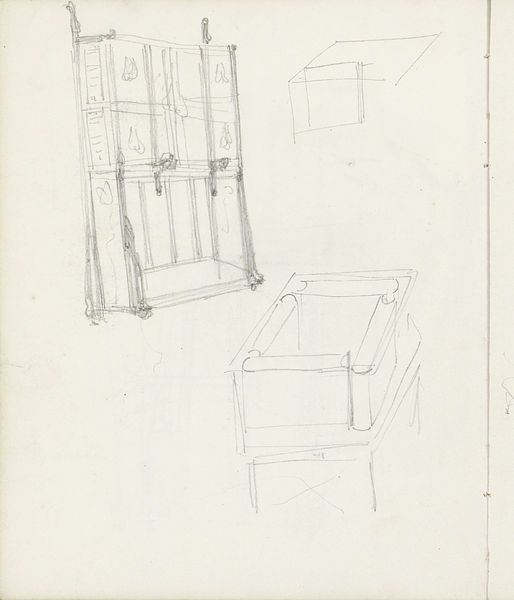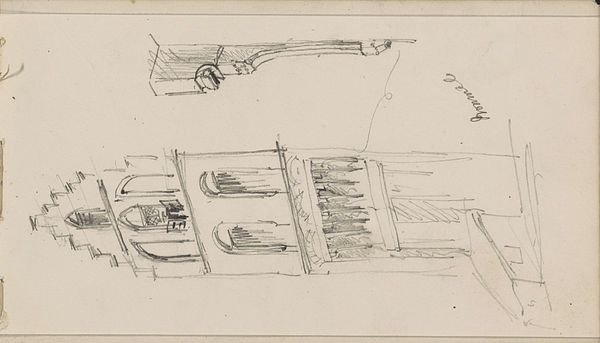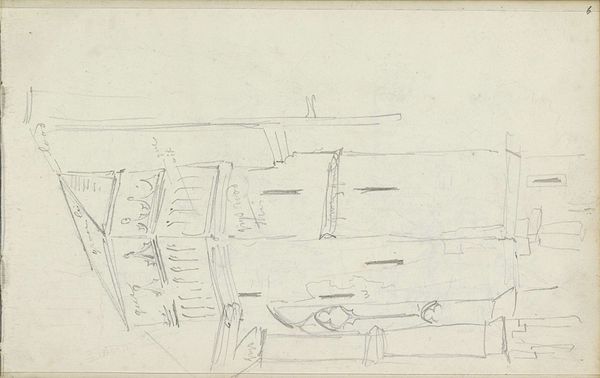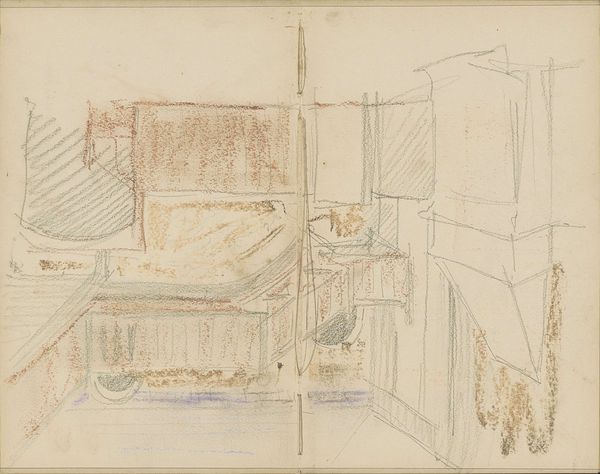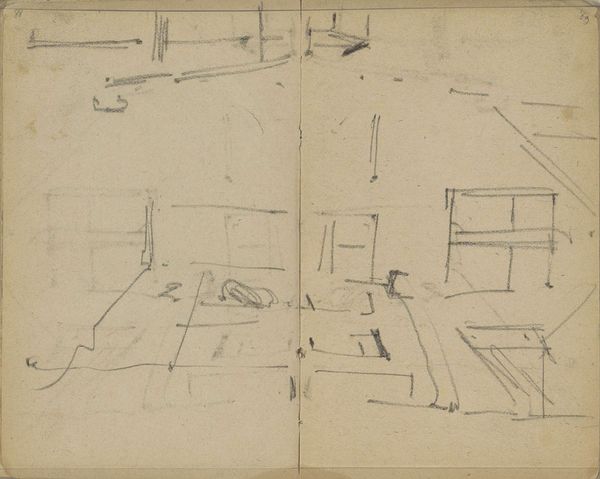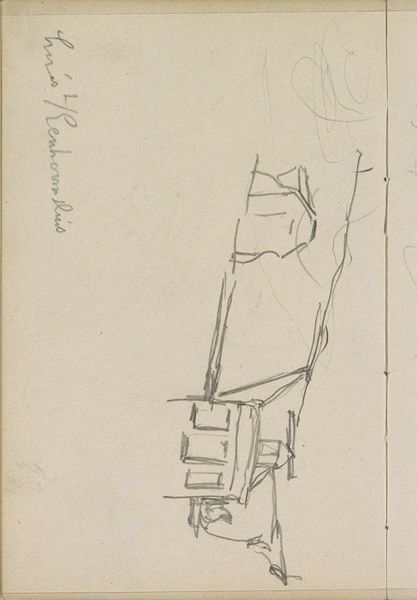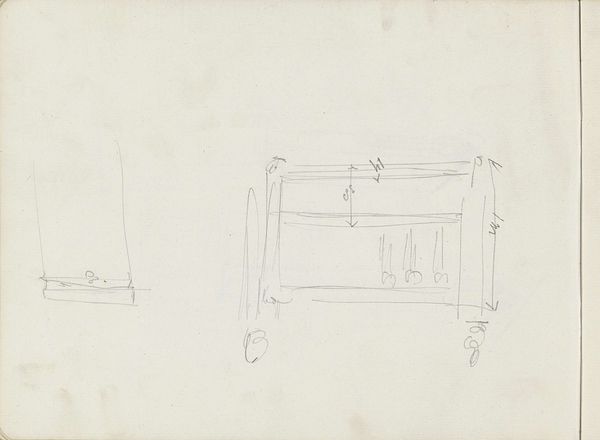
drawing, pencil
#
drawing
#
amateur sketch
#
aged paper
#
toned paper
#
art-nouveau
#
sketch book
#
incomplete sketchy
#
form
#
personal sketchbook
#
idea generation sketch
#
sketchwork
#
detailed observational sketch
#
pencil
#
line
#
initial sketch
Copyright: Rijks Museum: Open Domain
Editor: This is Carel Adolph Lion Cachet's "Wand en plafond van een interieur," made around 1905-1910. It's a pencil drawing. The Art Nouveau style feels ornate but there's an incompleteness to it that I find very appealing. What's your take? Curator: Immediately, I’m drawn to the raw materiality of this drawing. Pencil on paper, yes, but look at the hasty lines, the evident calculations, even the aging of the paper itself. This wasn't meant for display. It's a working drawing, a material record of the design process. How do you think this reveals the labor involved in creating an interior space? Editor: It’s interesting to think of this as work instead of just a preliminary sketch for something fancier. I hadn't considered the actual labor involved. It shows all the thinking, the measurements...it's less about pure aesthetic beauty, right? Curator: Exactly. Cachet isn’t just creating "art;" he's actively participating in the transformation of physical space, dictating the production of materials, shaping labor, and, ultimately, influencing consumption through design. The Art Nouveau style wasn't spontaneously created. These sketches and notes show how those final products are made. Does seeing the "backstage" here change how you view the finished Art Nouveau products? Editor: Absolutely! I suppose I hadn’t previously given much thought to how designers conceptualized the materials and manual processes required to make their visions a reality. Curator: And that realization, that the art we value emerges from such detailed practical labour, invites a totally new understanding. This image reminds me how artistic vision can shape industrial production. Editor: Thanks, I'll never look at a fancy interior the same way again! Curator: Indeed. By examining the process and materials we are questioning that boundary that art history makes between high art and craft.
Comments
No comments
Be the first to comment and join the conversation on the ultimate creative platform.
